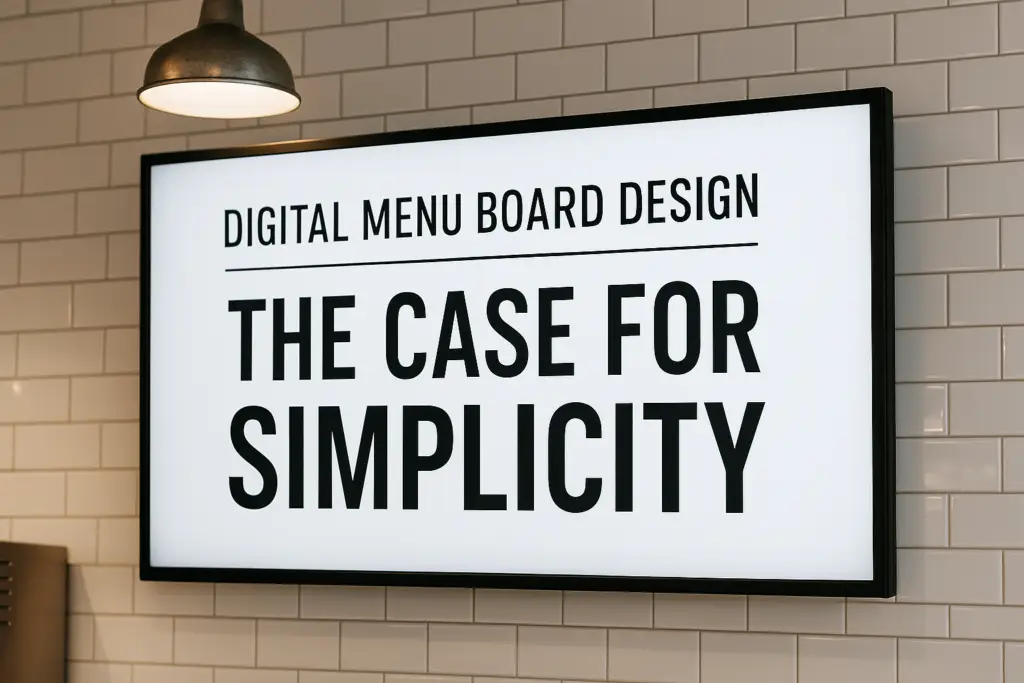From local cafés to busy drive-thrus, digital menu boards have become essential for restaurants. They make it easier to manage menus, speed up service, and serve up visuals that actually whet the appetite. But these screens aren’t just tech upgrades. When used right, they’re operational tools that help customers decide quickly and keep lines moving.
That said, not all digital menu boards hit the mark. Some are overloaded with text, flashy transitions, or nonstop promos. They might look cool, but if customers can’t find the menu fast, they’re not doing their job.
The key? Keep it simple. A clean, well-designed board does more than look modern—it drives orders and improves the entire dining experience.
Why Simplicity Is Key for Dynamic Digital Menu Displays
Digital menu boards have one job: help customers make quick, confident decisions. When screens are overloaded with animations, tiny text, or constant promos, that goal gets lost.
Think about it. You pull up to a drive-thru and the menu is a mess—flashing graphics, too much copy, no clear structure. Instead of placing your order, you’re squinting and second-guessing. That’s a design fail.
Here’s why simplicity wins every time:
Better Readability
Clean layouts and readable fonts let customers scan fast and get what they need—without the guesswork.
Quicker Orders
When the menu is clear, people don’t hesitate. That means shorter lines and happier customers.
Stronger Branding
Simple doesn’t mean boring. It means intentional. A consistent, uncluttered design reinforces who you are.
Smoother Operations
Fewer delays at the counter or window. More throughput. Better flow during peak hours.
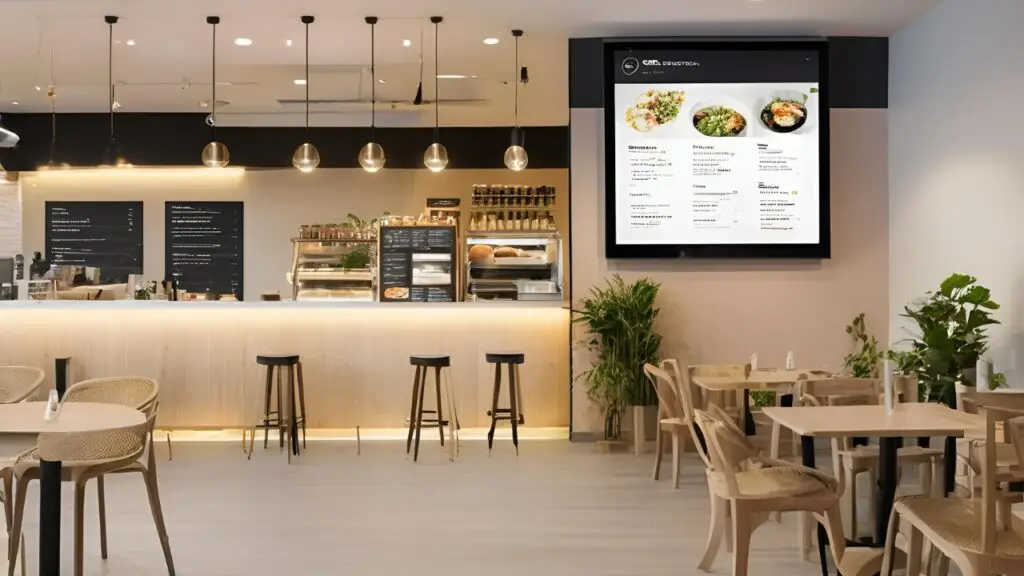
Lessons Learned from Overcomplicated Digital Menu Boards
Years ago, I worked on a digital menu board project for a bustling café. The original menu board was overloaded with text—every drink size, customization option, and pricing variation was squeezed into a single display. The result? Confused customers, long lines, and frustrated staff.
My first recommendation was to simplify. We divided the menu into three sections: customer favorites, seasonal specials, and add-ons. Each section was easy to read, with bold headings, large fonts, and a few high-quality images.
The transformation was immediate. Customers could quickly locate what they wanted, orders moved faster, and staff spent less time explaining options. Sales of highlighted specials increased by 25% in the first month.
Optimize Your Displays – Let’s Talk!
Designing Effective Digital Menu Boards: Best Practices
Creating a digital menu board that’s visually appealing and easy to navigate is both an art and a science. Here’s how to ensure your menu board delivers maximum impact:
Prioritize Logical Layout for Effortless Navigation
Organize your menu items into clear, intuitive categories such as “Entrees,” “Drinks,” “Sides,” or “Desserts.” Logical grouping helps customers quickly find what they’re looking for, especially during peak hours.
Example:
For a drive-thru menu, dedicate separate panels to combos, breakfast options, and beverages. Highlight quick-grab items like “Snacks” or “On-the-Go Meals” to cater to busy customers.
Use Readable Fonts to Ensure Clarity
Your fonts must be easy to read at a glance and from a distance. Stick to clean, sans-serif fonts like Arial or Open Sans, and avoid overly decorative or script-style fonts that can confuse customers.
Pro Tip:
Maintain a contrast ratio of at least 4.5:1 between your text and background to meet accessibility standards and improve visibility under various lighting conditions.
Keep Animations Dynamic Yet Subtle
While animations can draw attention to specials or limited-time offers, overusing them can distract from the menu itself. Use smooth transitions or gentle highlights to guide the eye without overwhelming the viewer.
Best Use of Animations:
- Fade-ins for featured items.
- Subtle glowing borders around limited-time promotions.
- Smooth scrolling for secondary menu panels, like dessert options.
Highlight Specials and High-Margin Items Strategically
Guide customers toward your most profitable items by giving them prominence on the menu. Use larger fonts, bold colors, or highlighted sections to draw attention.
Pro Tip:
Place high-margin items in the top-left or center of the menu—areas where the eye naturally gravitates first.
Checklist: Designing a Perfect Digital Menu Board
- ✅ Group items into clear categories.
- ✅ Use clean, sans-serif fonts that are easy to read.
- ✅ Incorporate subtle animations to guide attention.
- ✅ Limit visuals to 1-2 high-quality images per panel.
- ✅ Align colors and design with your brand.
- ✅ Follow accessibility guidelines for contrast and height.
- ✅ Promote specials and high-margin items strategically.
- ✅ Use software for quick, real-time updates.
By following these best practices, you’ll create a digital menu board that not only looks great but also enhances the customer experience, drives sales, and streamlines operations.
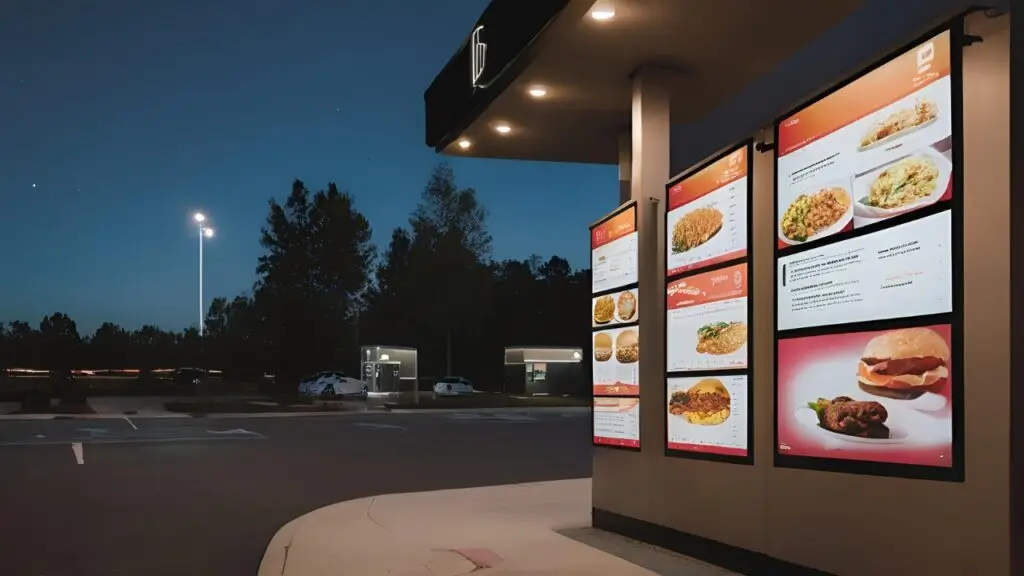
What Overcomplication Costs You
When digital menu boards are cluttered or overly complex, the consequences are immediate and costly:
- Customer Frustration: A confused customer is less likely to make a purchase or return.
- Longer Wait Times: Indecision at the counter or drive-thru slows down service for everyone.
- Missed Opportunities: Overloaded screens can bury your most profitable items or specials.
The solution? Dedicate a portion of your screen to always display the full menu. While promotions are important, they should complement—not replace—the primary menu.
Benefits of Simplicity for Your Business
When digital menu boards focus on simplicity, the benefits go beyond customer satisfaction. Here’s how a streamlined approach can boost your business:
- Increased Sales: Restaurants using simplified digital menu boards report up to a 20% boost in sales of featured items, thanks to clear and compelling calls to action like ‘Try Our New Spicy Burger!’
- Better Branding: A clean, well-designed board reflects professionalism and attention to detail.
- Effortless Updates: Simple layouts are easier to update, saving time and reducing errors.
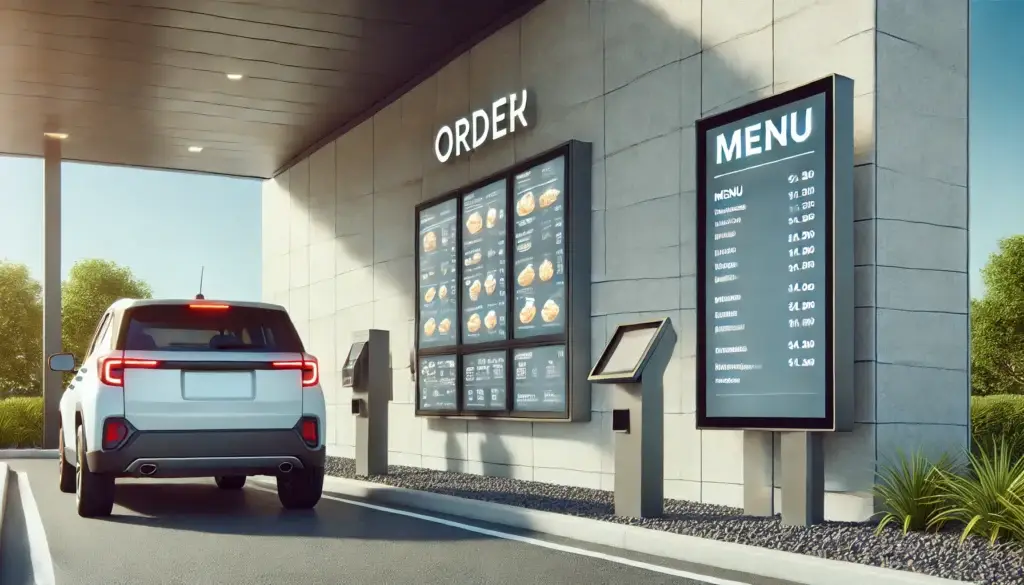
The Takeaway: Design for the Customer
That frustrating drive-thru experience taught me something important: Digital menu boards should always serve the customer first. While it’s tempting to showcase everything your business offers, less is often more. Customers appreciate clarity, speed, and accessibility over flashy gimmicks.
The next time you’re reviewing your digital menu boards, ask yourself:
- Can a customer easily find what they’re looking for?
- Does the board guide them toward popular or high-margin items?
- Are the visuals and layout aligned with your brand?
Future Trends in Digital Menu Boards
Technology is advancing, and so are digital menu boards. Here are a few trends transforming the industry:
- Interactive Displays: Picture a customer customizing their burger by selecting toppings and sides directly on a touchscreen. These displays not only enhance the ordering experience but also reduce errors.
- AI-Driven Recommendations: Imagine your menu boards suggesting hot beverages on a chilly day or promoting iced drinks during summer afternoons. AI adapts menus based on real-time data, driving higher sales.
- Sustainability Messaging: Highlight eco-friendly practices like locally sourced ingredients or waste reduction strategies. Customers appreciate brands that align with their values, and your menu board can reinforce that connection.
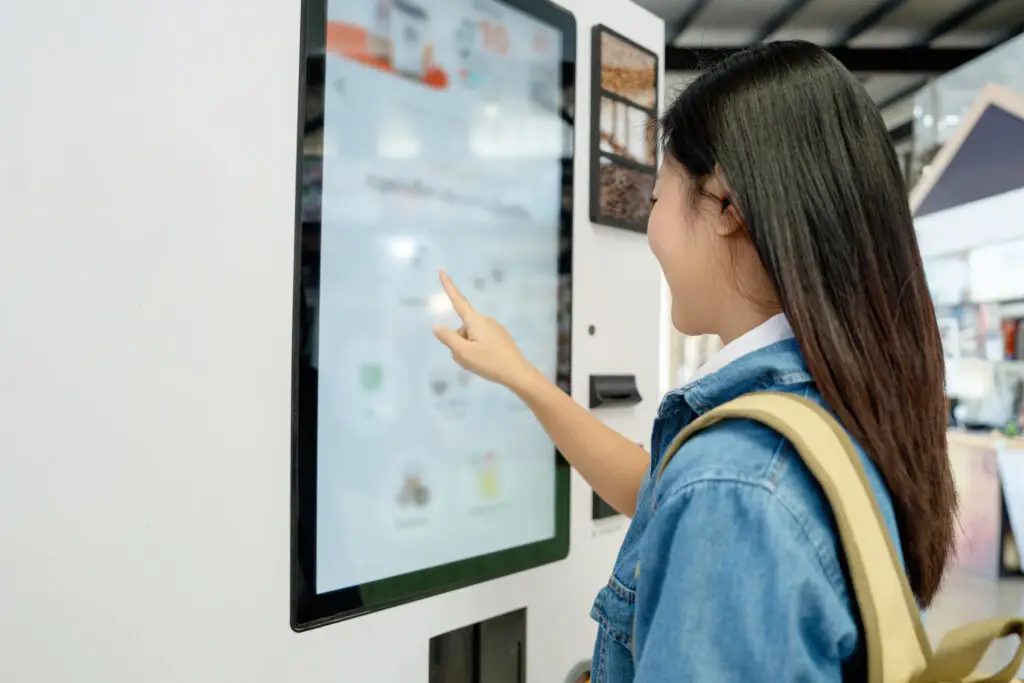
Ready to Simplify Your Digital Menu Boards?
Your menu isn’t just a list of items—it’s your chance to make a great first impression. With dynamic digital menu boards designed for simplicity and customer needs, you can create a seamless experience that keeps diners coming back. Start designing smarter menus today and watch your business thrive.
Whether you’re running a fast-food chain, a cozy café, or a fine-dining establishment, the principles are the same: Keep it simple, make it clear, and always prioritize your customers’ needs.
Don’t let outdated menus hold your restaurant back. Upgrade to dynamic digital menu boards today! Contact a digital signage consultant for tailored solutions that simplify your menu, boost customer engagement, and drive higher sales.
FAQ
❓ What are the main advantages of using digital menu boards in restaurants?
Answer:
Digital menu boards offer real-time flexibility, improved visual appeal, and better customer engagement. They allow restaurants to update pricing, promotions, and menu items instantly—without reprinting costs. Plus, eye-catching animations and high-contrast visuals help drive upsells and reduce perceived wait times at the counter.
❓ Are digital menu boards worth the investment for small or independent restaurants?
Answer:
Yes—especially when factoring in long-term savings and revenue impact. Many small restaurants start with affordable system-on-chip (SoC) displays and cloud-based CMS tools. This setup minimizes upfront costs while delivering the same benefits as enterprise systems. Over time, digital boards pay off through labor savings, reduced errors, and stronger brand presentation.
❓ Can I manage multiple restaurant menus from one platform?
Answer:
Absolutely. Modern digital menu board software lets you control multiple screens—or even multiple locations—from a single dashboard. This is especially useful for restaurant groups or franchises looking to maintain brand consistency while localizing promotions, pricing, or language per site.

